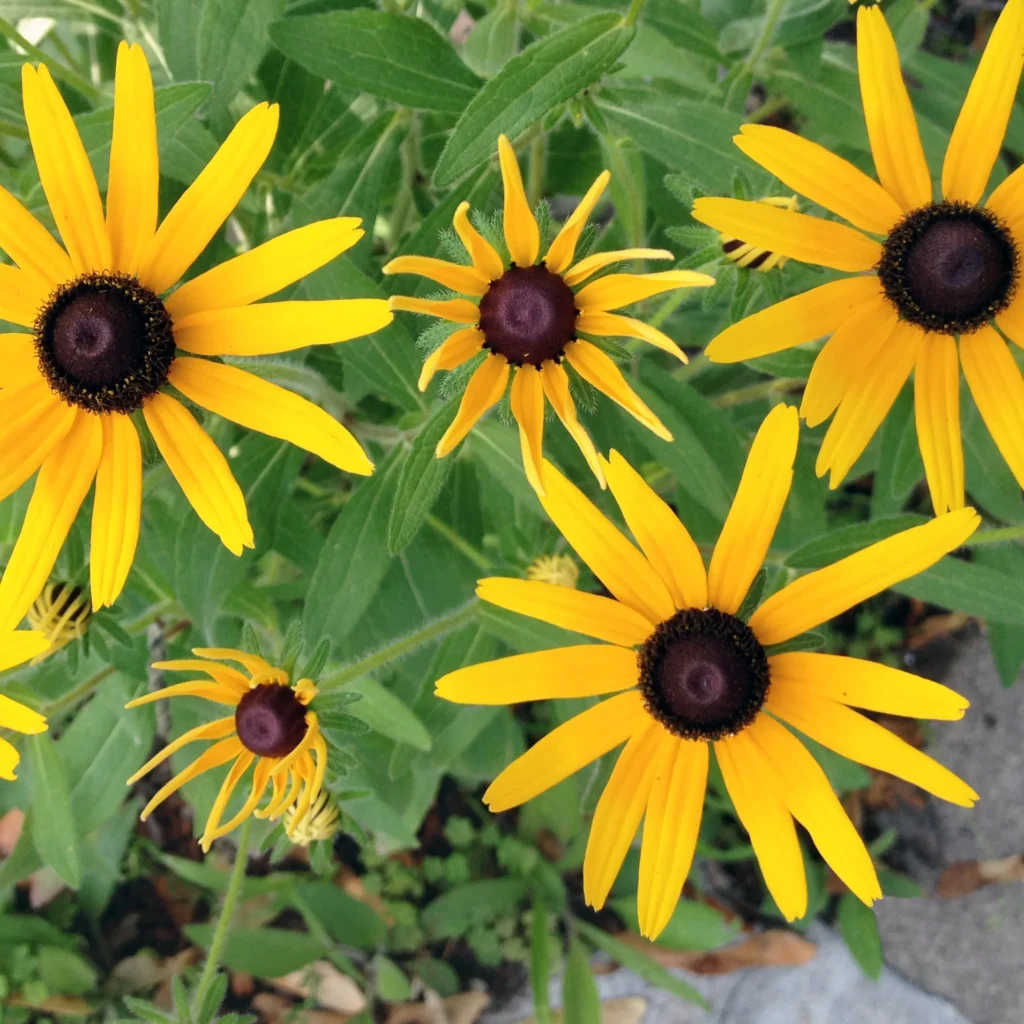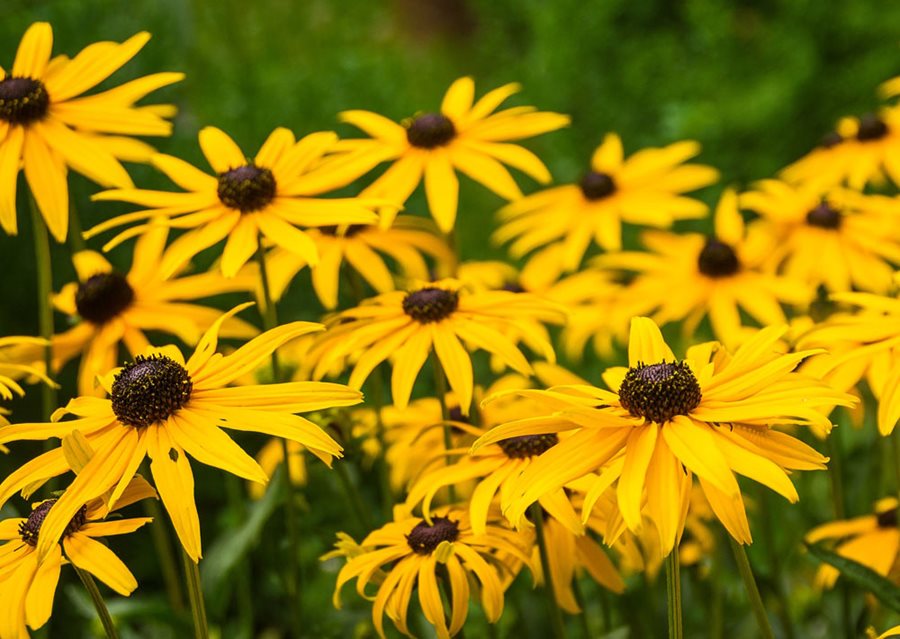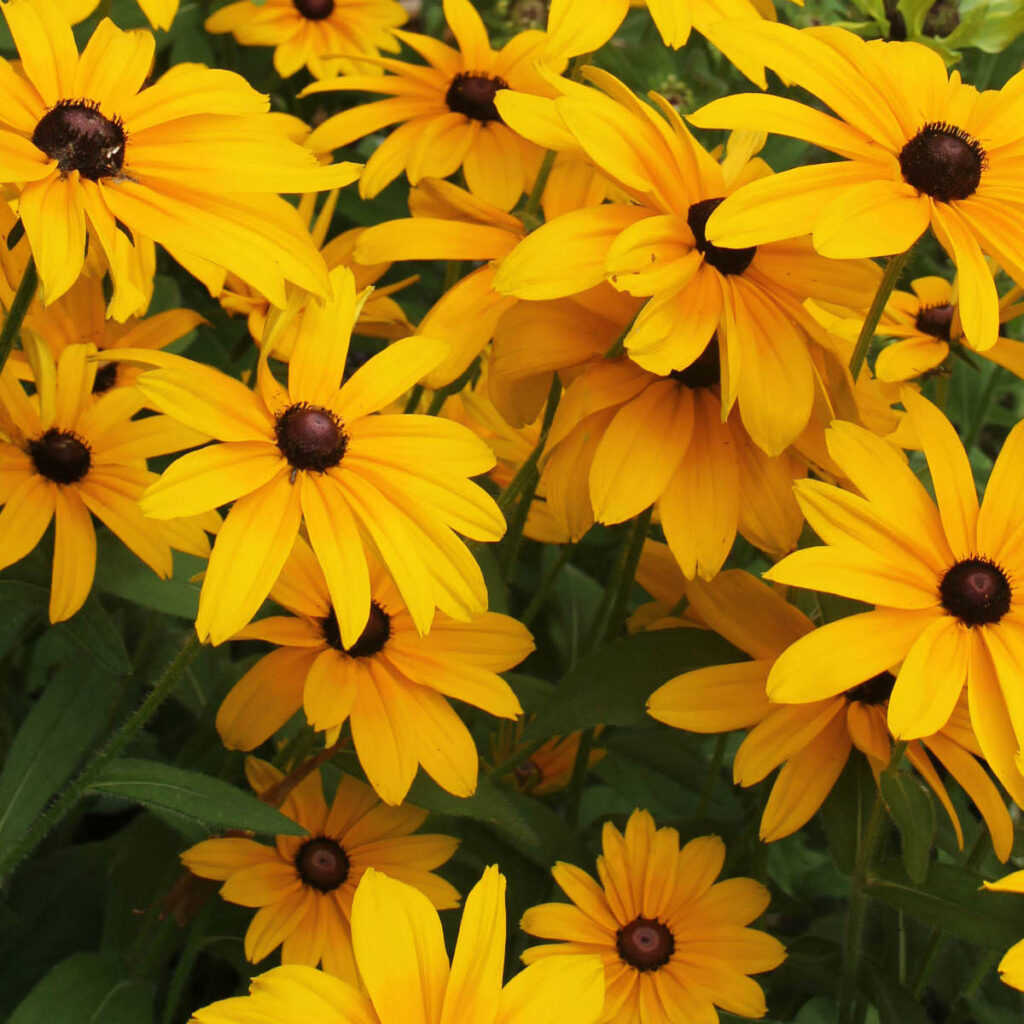When you imagine a warm, sunny meadow bursting with color, chances are you’ll picture the familiar face of the Black-Eyed Susan. Scientifically known as Rudbeckia hirta, this sunny, daisy-like flower with its bright golden-yellow petals and dark central cone is one of North America’s most iconic wildflowers. But beyond its natural habitats, Black-Eyed Susan has also found a place in gardens, parks, and floral landscapes around the world.
This raises an interesting question: which country produces the most Black-Eyed Susans in the world? Unlike commercially farmed flowers like roses, tulips, or carnations, the Black-Eyed Susan has a production story deeply rooted in ecology, conservation, and native plant cultivation. Let’s explore this cheerful bloom’s journey across continents, identify key producers, and understand its global presence in both wild and cultivated landscapes.
Origins and Characteristics of Black-Eyed Susan

Before we dive into global production, it’s worth appreciating what makes Black-Eyed Susan so popular and significant:
- Botanical name: Rudbeckia hirta
- Native range: Eastern and Central North America, from southern Canada through much of the United States
- Plant type: Annual, biennial, or short-lived perennial
- Bloom time: Mid-summer to early fall
- Uses: Garden perennial, pollinator habitat, roadside planting, prairie restoration, and ornamental bedding
Black-Eyed Susans thrive in a variety of soils, tolerate drought, and attract a wide array of beneficial pollinators such as bees, butterflies, and birds.
Where Are Black-Eyed Susans Grown?
Black-Eyed Susan is not a mass-produced flower crop like tulips or chrysanthemums, but it is widely cultivated in regions where native plant landscaping, prairie restoration, and pollinator gardening are popular. The plant is mainly produced through native plant nurseries, seed companies, and ecological restoration organizations rather than large-scale commercial flower farms.
Let’s examine where it thrives most:
United States: The Undisputed Leader

The United States is undoubtedly the largest producer of Black-Eyed Susan in the world. As the flower’s native land, it grows naturally in open meadows, along roadsides, and in wildflower prairies throughout much of the country.
Why the U.S. leads production:
- Ecological Restoration Projects: Black-Eyed Susans are heavily used in prairie restoration, roadside rewilding, and pollinator-supportive projects by federal, state, and conservation groups.
- Native Plant Nurseries: Numerous nurseries across the U.S. specialize in native plants, including Rudbeckia hirta, offering seeds and potted plants for both home gardeners and large-scale restorations.
- Cut-Flower Production: While not a major cut flower like roses, Black-Eyed Susans are grown for local florists and farmers’ markets in mid-summer seasons.
- Cultural Significance: It’s also Maryland’s official state flower and a feature in native landscapes and public botanical gardens nationwide.
The U.S. boasts thousands of acres dedicated to native plant production, and Black-Eyed Susan remains one of the top-selling native wildflowers in seed catalogs.
Canada: A Close Second
As a close ecological neighbor, Canada also produces a significant amount of Black-Eyed Susan. It grows naturally in southern parts of the country, including Ontario, British Columbia, and Alberta. Canadian nurseries and native seed producers supply this flower for ecological restoration, pollinator gardens, and municipal landscaping projects.
Notable uses:
- Roadside wildflower seeding
- Pollinator habitats
- Prairie conservation and natural park plantings
Though smaller in scale compared to the U.S., Canada’s ecological emphasis places it among the top producers globally.
Europe: Cultivated Ornamentals

In Europe, Black-Eyed Susan isn’t native but has become a popular garden plant, especially in the United Kingdom, Germany, the Netherlands, and France. European production is centered around horticultural nurseries and bedding plant programs rather than ecological restoration.
European growers favor ornamental cultivars such as:
- Rudbeckia hirta ‘Indian Summer’
- Rudbeckia fulgida ‘Goldsturm’
- Rudbeckia ‘Toto’ (a compact variety for containers)
While European production is significant in the garden plant market, it doesn’t approach the ecological-scale use found in North America.
Asia: Naturalized and Small-Scale Production
In China, Japan, and other parts of East Asia, Black-Eyed Susan has naturalized in some areas after being introduced for horticultural purposes. It’s grown in parks, public gardens, and botanical collections, although its production is primarily ornamental and regionally limited.
China’s flower markets and Japan’s appreciation for seasonal floral displays have ensured that the Black-Eyed Susan has a place in Asian gardens, though without the extensive seed and restoration industries seen in the U.S. and Canada.
Global Production Summary

| Country | Production Type | Scale |
|---|---|---|
| United States | Native wildflower seed, nursery plants, ecological restoration | Largest producer globally |
| Canada | Native wildflower seed, native landscaping | Significant production |
| Netherlands/Germany/UK | Ornamental bedding and nursery plants | Regional production |
| China/Japan | Small-scale ornamental and naturalized growth | Limited |
Why No Single Dominating Commercial Producer?
Unlike heavily commercialized flower crops such as tulips or roses, Black-Eyed Susan is a decentralized native plant with wide production by local seed growers, nurseries, and restoration initiatives.
Key reasons:
- Ecological Importance: Often grown for habitat restoration and pollinator support rather than for cut-flower markets.
- Hardy and Self-Seeding: The plant readily reseeds, reducing the need for large-scale monoculture farming.
- Diverse Grower Network: Thousands of small nurseries and seed companies produce the plant regionally.
Market Trends and Future Outlook

The global gardening community has seen a growing interest in native plants, pollinator gardens, and sustainable landscapes — all of which heavily favor plants like Black-Eyed Susan.
In North America, especially the U.S., demand continues to increase for:
- Native wildflower seed mixes for roadsides and parks
- Pollinator-friendly native plant gardens
- Organic and eco-conscious gardening trends
This rising interest ensures that the U.S. will likely remain the world’s largest producer of Black-Eyed Susan for years to come.
Conclusion
To answer the question directly: The United States is the largest Black-Eyed Susan producer in the world. Its native range, extensive use in ecological projects, abundant nursery production, and cultural significance give it a production scale unmatched by any other nation.
While other countries like Canada, Germany, the UK, the Netherlands, China, and Japan contribute to global cultivation, none rival the volume and breadth of production found in the United States.
As the world increasingly embraces native plants for their ecological and ornamental value, Black-Eyed Susan’s sunny face will continue to brighten gardens and landscapes around the globe — with North America leading the way.





Leave A Comment